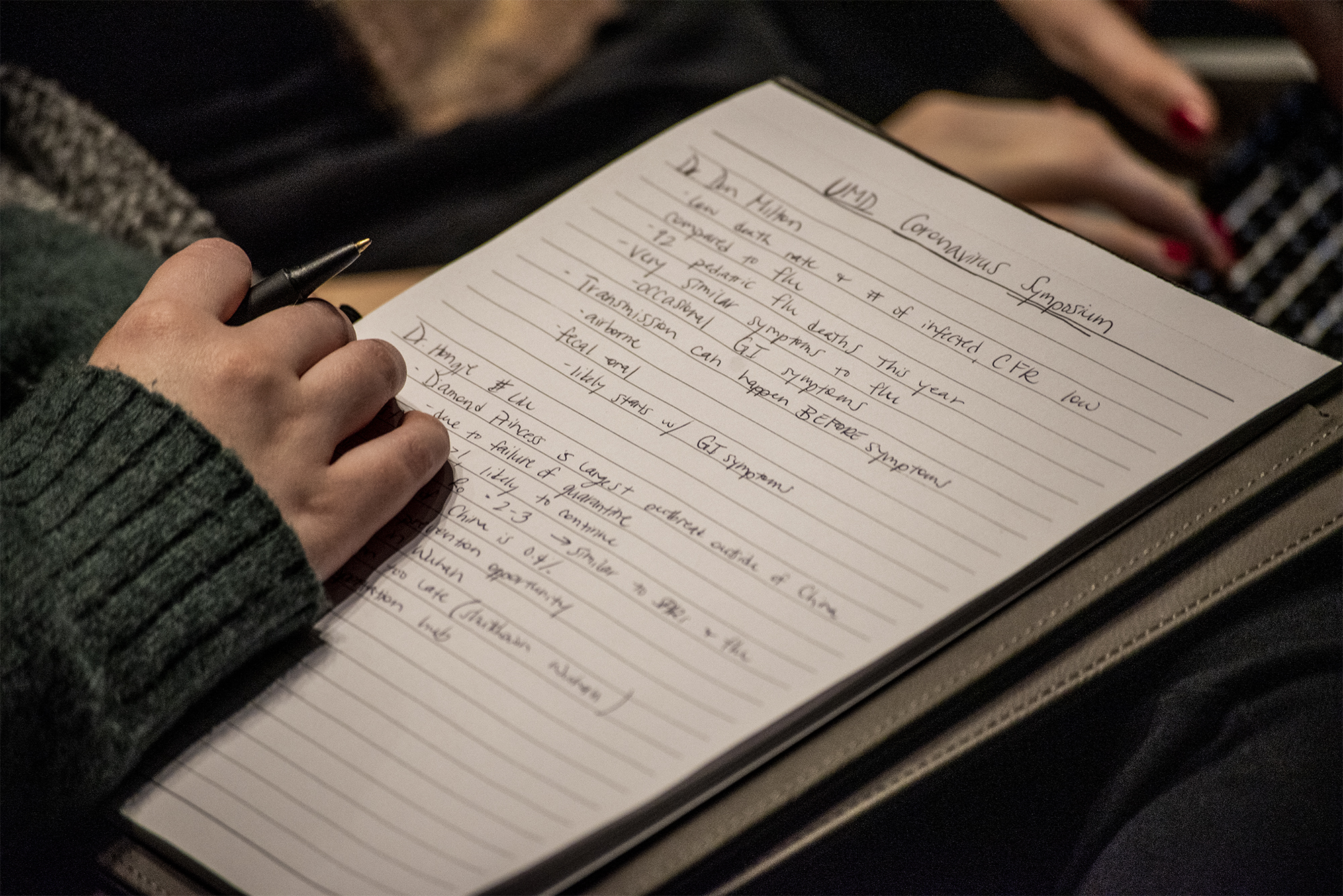Four faculty members from the University of Maryland public health school discussed the science and impact of the coronavirus Thursday afternoon at a symposium in Hoff Theater in an effort to educate the community.
The four presentations covered topics such as the spread of the recent virus, COVID-19, and effective risk communication strategies. As of Thursday, there have been more than 75,000 confirmed cases of the virus, almost all of which are in China, according to the World Health Organization.
“It’s a time when we have more questions than answers,” said symposium moderator Dushanka Kleinman, the associate dean for research at the public health school.
[Read more: “RNA research at UMD could give insight on new coronavirus strain”]
Donald Milton, the first presenter, discussed the science behind the virus. He said the coronavirus is from a large family of RNA viruses that can infect organisms such as rats and whales, in addition to humans. There are three new types of viruses that have caused extreme disease — the SARS virus in 2003, the MERS virus in 2012 and the current virus, SARS-CoV-2, which causes the COVID-19 disease. The illness can be airborne and transmitted through nose and throat swabs and in feces.
Hongjie Liu — a professor and chair in the epidemiology and biostatistics department — focused his presentation on why the virus has been mostly confined to China. The outbreak is personal for Liu, he said, since he has family there.
Liu said the virus spread so quickly around the country because China missed early opportunities to contain it. Before Jan. 1, the virus had been localized to Wuhan, but effective measures — such as identifying and quarantining those infected— were not taken until Jan. 20.
“China missed very important prevention opportunities,” Liu said. “If the intervention action was taken on Jan. 1 or before that, the spread of virus from Wuhan to other areas of China could be prevented, and the epidemic could be reduced.”
After Liu spoke, Cynthia Baur, the director of this university’s Horowitz Center for Health Literacy, discussed how to deal with the spread of misinformation and fear.
[Read more: “After UMD student died of adenovirus, bill aims to improve colleges’ outbreak response“]
Baur started by saying health professionals have maintained that Americans’ risks of contracting the virus is very low, but people are still fearful. She showed pictures of people in China in masks and a desolate freeway — images that can incite uncertainty.
Baur also instructed attendees to follow a personal to-do list for handling worries about the virus, which included expressing empathy for those affected and disrupting misinformation.
“What we’re really dealing with here is perception,” Baur said. “People will potentially take action on the things you’re sharing.”
As the last speaker at the event, public health school dean Boris Lushniak shared “the optimism approach.” Lushniak worked for the Food and Drug Administration during the 2009 flu pandemic and said that if the coronavirus spreads as widely as that pandemic, there are procedures in place to limit the spread.
“Are we heading towards a pandemic? I don’t know,” Lushniak said. “Pandemics have the potential to be major problems for us, for our society, for our people, for the worldwide community. And at the same time, we’ve learned a lot over the years.”
Junior general biology major Leticia Arguera said the symposium lessened her fears about the virus and made her more aware of the preventative measures people are taking.
“I’m definitely less worried. They did a great job by emphasizing how good we are at handling epidemics,” she said after the event. “What we’ve all been getting based off the internet, it’s just a bunch of information that’s just making you scared.”



